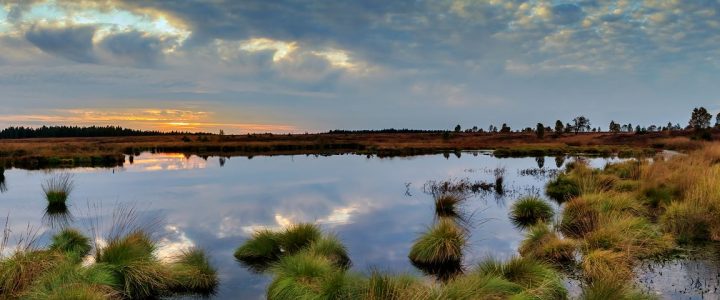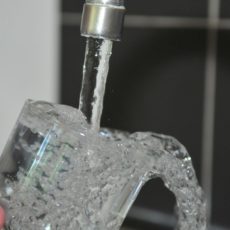
As is perhaps obvious by the title, wetlands are where water covers land – specifically, soil. The water may be salt or fresh, or anywhere in between. And examples of wetlands are marshes, peatlands, deltas, rivers, lakes, (freshwater) and mangroves, estuaries, seagrass beds, coral reefs and lagoons (saltwater). They are picturesque, fragile, valuable – and in grave danger.
Let’s start with some quickfire facts:
* 40% of all the world’s species of plant and animals live or breed in wetlands – and 25% of those are at risk of extinction;
* The EPA calls them ‘biological supermarkets’ on account of the great abundance of food they provide;
* Peatlands cover only 3% of global land area but store 30% of land based carbon (twice as much as the world’s forests);
* Mangroves are also extremely effective carbon sinks, rivaling that of forests;
* Wetlands are the main ecosystem in the Arctic, covering nearly 60% of the land mass, and providing over 4 million people’s food supply;
* A mangrove could reduce the destructive force of a tsunami by up to 90%;
* Over 1 billion people across the globe are reliant on wetlands for income;
* They are integral to meeting 75 of the UN’s Sustainable Development Goal indicators, relating to poverty, hunger, health, energy consumption and climate change;
* They are the world’s water filters, trapping pollutants like phosphorous and heavy metals; transforming dissolved nitrogen into nitrogen gas; and neutralizing harmful bacteria;
* They appear on 6 continents (sorry, Antarctica) and in every climate;
* Up to 87% of these richly biodiverse ecosystems have been lost since the year 1700 (a rate of ‘loss’ more than 3 times faster than that of natural forests).
It’s fairly clear that these waterlogged patches of land are mighty important.
Healthy, natural wetlands are critical for human survival
Global Wetland Outlook, 2018
So how exactly are we ‘losing’ these beautiful ecosystems? Well I’m afraid to say that it’s us. Human behaviour. Intentional damage, destruction or conversion occurs when we decide that we want to use the land which is currently a wetland. We drain it, dredge it, dam it or channel it, to use for crops, mining, or pasture land.
Then we overload the wetland with chemicals. While indeed they are filters, they can only do so much to absorb fertilizers and pesticides from agricultural run-off; or heavy metals from industrial run-off.
If we introduce animals, they over graze the area. This loss of vegetation means they are at risk of floods, high tides and erosion, rather than offering their usual protection from those environmental factors.
Of course, climate change is playing a part. Increasing the water temperatures is putting species at risk, especially with flourishing algae in warmer waters; natural disasters like droughts and floods and hurricanes are occurring with more frequency and severity, putting the whole ecosystems at risk; rising sea levels are drowning certain species of mangrove trees; and the Arctic wetlands rely on the frozen permafrost staying frozen to store masses of carbon.
As if all of that isn’t bad enough, the destruction of wetlands in turn plays a part in climate change too: damage to peatlands, mangroves and the melting permafrost sees those enormously effective carbon sinks releasing all that carbon.

Although this may all be a little overwhelming (if I’m honest, ‘overwhelmed’ is now where I live 50% of the time), there are things being done to prevent the situation from getting worse. The Ramsar Convention on Wetlands is part of United Nations Water mechanism and is the sole international treaty focused on wetlands. In their 2018 report titled Global Wetland Outlook they label wetlands both “dangerously undervalued” and “under far greater threat than forests”. But given their intimate knowledge of the ecosystems and profound grasp of their integral place on Earth, they are able to effectively lead efforts to save them.

The Ramsar Convention is a platform for 170 contracting parties to collaborate for wetland conservation. The group currently oversees 2,300 wetland sites, taking in an area larger than Greenland, and they have ensured that wetlands now feature in planning and implementation of post 2015 development, like the UN SDGs and the Paris Agreement on Climate Change. Ramsar are ensuring that protection of wetlands becomes a legal and policy requirement, and such things as the need for development of renewable energies does not outweigh the presence of the ecosystem (a wetland can’t be converted to produce biofuels, for example). And there are financial incentives for farmers and groups to protect the areas, like the Biodiversity Tax incentive in South Africa, in direct opposition to the previously common and perverse financial incentives for farmers to convert the land. Public awareness of the need for and the fragility of wetlands is paramount, and so World Wetlands Day was born. This is an opportunity to bring wetlands in your area to the forefront of your mind.
Thankfully, the Ramsar Convention aren’t alone in their mission. Wetlands International is a not-for-profit aimed also at raising awareness of the beauty and necessity of wetlands, so is another great resource. America’s Wetland Foundation and the Society of Wetland Scientists are also very much on board, and Ramsar partner with the World Wildlife Fund. So there are organizations and opportunities aplenty to raise awareness about wetlands, promote the sustainable use of the areas, and ensure you’re participating in responsible tourism of these delicate wetland ecosystems.




